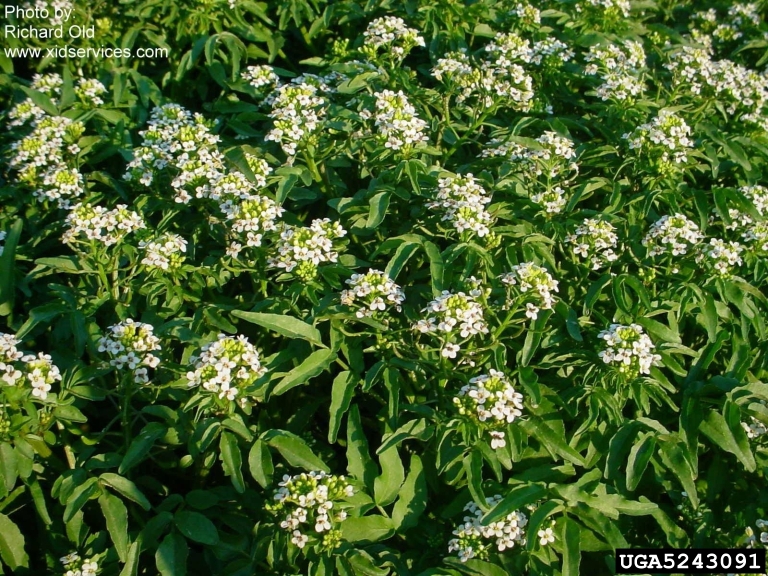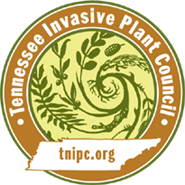Rorippa nasturtium-aquaticum (L.) Hayek
Rorippa nasturtium-aquaticum (L.) HayekWatercress
| Category |
|---|
| Aquatic |

Description
Stems
The plant is characterized by long floating and ascending stems which are often rooted to the bottom at several points. A single stem may be several meters in length forming a tangled mass with other stems.Leaves
Leaflets are green and fleshy. They are divided into 3 to 9 rounded segments, with a terminal lobe often larger than the rest.Flowers
Watercress produces clusters of small white, five-mm flowers which develop on the ends of shoots. Each flower has four petals.Fruit
Fruit is a slender pot 1 to 2.5 cm long containing coarsely textured seeds.Images
Photo: Richard Old, XID Services, Inc., Bugwood.orgMore images of Rorippa nasturtium-aquaticum
Life History
Rorippa nasturtium-aquaticum is an aquatic perennial herb native to Europe and naturalized in the United States. Also known as green watercress, this succulent, glabrous herb reproduces vegetatively forming roots at nodes, as well as from seeds. New foliage develops in the spring and flowers form by midsummer.Fresh leaves of watercress are used as salad greens and as a garnish. The leaves can be steamed and eaten as a vegetable. As a medicinal plant, watercress has been traditionally considered a diuretic, expectorant, purgative, stimulant, stomachic, and tonic. It has also been used as a remedy against anemia, eczema, kidney and liver disorders, tuberculosis, boils, warts, and tumors.
